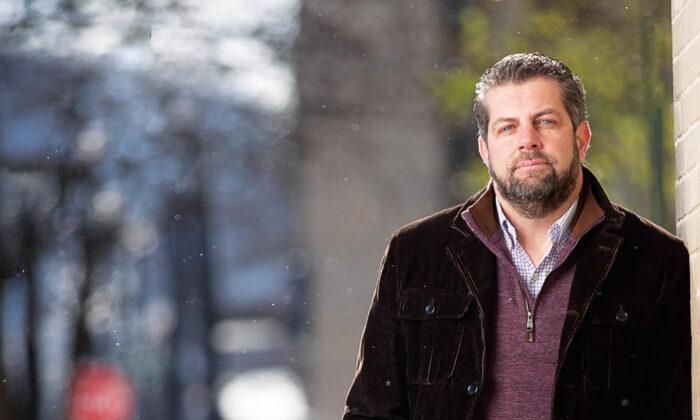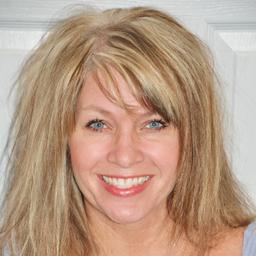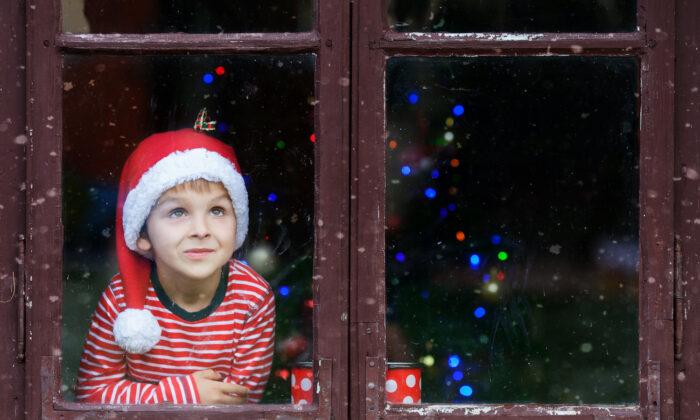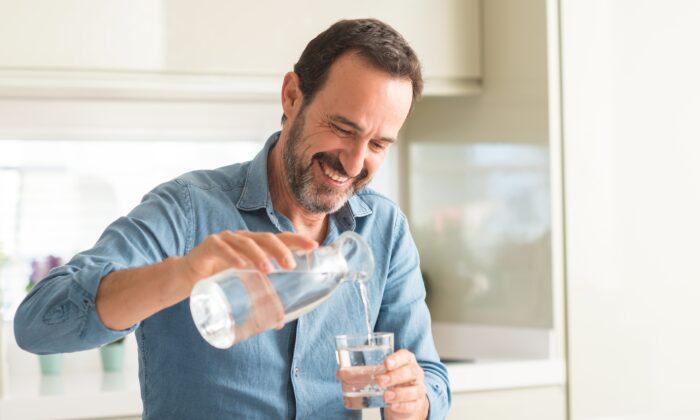Nestled amidst the rolling hills of the Appalachian Mountains, in the heart of coal country, lies the small town of Williamson, West Virginia. Separated from its counterpart, South Williamson, Kentucky, by the Tug Fork River, Williamson is probably best known for an infamous feud—that of the Hatfields and McCoys.
An Idyllic Past
Dr. C. Donovan “Dino” Beckett grew up in Williamson at a time when people still remembered its heyday. “It was still a great place to grow up when I was young, but it wasn’t what it had been,” Beckett said.Once a thriving community full of a diverse array of cultures, Beckett remembers that timbering was what first brought people there during the Hatfield and McCoy era. This was followed by coal, and then all the businesses that sprang from that. “Coalfield Jews” is a great book that Beckett recommends. It details the heavy European representation in these early coal communities. The economy was further bolstered by the Norfolk and Southern Rail Company, where Beckett’s dad worked.
Returning Home
While spending time as a West Virginia University student in a rural Chilean community, Beckett was amazed at the local doctors who, with no modern medical conveniences, had developed amazing diagnostic skills, and were also deeply involved in their small community of Tiltil. Beckett returned home inspired and decided to apply to medical school.After completing training at the West Virginia School of Osteopathic Medicine in Lewisburg, and a family medicine residency in Charleston, West Virginia, Beckett took a job in South Williamson, Kentucky. But he soon decided he missed West Virginia. “Even though it was a whole two miles across the river, I wanted to go back home and do more of my own thing.”
After taking a position at West Virginia’s Williamson Memorial Hospital, he decided to open a side concierge clinic in 2006. A novel concept at the time, he provided care for coal and gas company employees, and thanks to his focus on not just disease management, but prevention, it grew quickly.
Strengthening the Community
But Beckett didn’t stop there. He decided he wanted to purchase old buildings, rehab them, use the upstairs for housing, and the downstairs for business space. “Williamson is such a cool town with all this great architecture and infrastructure, and I wanted to help bring it back,“ he said. ”So, I lobbied to get on the Williamson redevelopment authority, and started to get involved with improving the aesthetics of the town. Then I started thinking, ‘What can we do to help improve the health of the community while we’re doing these economic development types of things?’”Beckett realized that telling his patients to eat right and exercise wasn’t enough. They needed a structured plan, access to affordable, healthy food, and a good support system. That’s when the idea for a farmers market was born.
“Probably one of the coolest things we did was involve two students from the local community college who were part of the Appalachia Community Academy for Leadership Development,“ Beckett noted. ”We didn’t have the money to research how to develop a farmers market, so we charged the students with this task as part of their learning. And these girls knocked it out of the park.”
In the first year, the monthly farmers market generated more than $20,000. By year two, it had grown into a weekly farmers market, generating $50,000 of income that was going back to the farmers and back into the community.
From there, things continued to grow “organically,” as Beckett described it. After winning the Robert Wood Johnson Cultural Health Prize for work they’d done to knit the community together, they decided to use some of the $25,000 prize money for a “pitch competition” to start identifying and supporting entrepreneurs. “If you look at poverty and entrepreneurs, they’re inversely related, so we knew if we wanted to improve the socio-economic status of the area, we had to create entrepreneurs,” Beckett said.
An employee at Beckett’s clinic had the winning idea in the pitch competition— a mobile farmers market. She used the $5,000 prize money to buy a supply truck and take produce around to the extended community. Her business is still going strong.
But even those who didn’t win a prize were inspired enough to see their ideas through to fruition. “One of the contestants pitched the idea of people dropping off a mason jar, and they would create a salad in it. You’d pick it up, have your lunch, then bring it back and use it the next day.” Beckett explained. Even though they didn’t win, they forged their own path, and now they have their own restaurant in town called 34:Ate, which is very successful.
Along the way, “Sustainable Williamson” was created. Beckett explained, “As we would do something, more people would get involved, and then new ideas would spring up. This is how Sustainable Williamson came about, and it was from this, that the idea for a community garden and some other ideas came about.”
Started on a plot of land beside the area’s public housing, the community garden is another thread that has woven the community together. There were people in public housing who knew how to garden but didn’t have access to land. They began helping other people who didn’t know how to garden. Everyone was exchanging ideas and secrets, growing produce, and creating something of value that they could share with their friends, eat themselves, or co-op at the farmers market.
Impressed by his sense of business savvy, and knowing him from being a near-classmate at West Virginia School of Osteopathic Medicine, where business skills weren’t really taught, I asked him how he learned so much.
A Fortuitous Meeting
In 2011, the coal economy weakened, and Williamson started losing more jobs. To help, Beckett decided to start a free clinic one day a week. As demand grew, they had to add more days. And then a chance encounter changed everything.The clinic has since grown from five employees, with 5,000 square feet of space, and a $650,000 operating budget, to now employing 120 people from the community. They also bought the Williamson Memorial Hospital after it closed and are planning to reopen it in 2022. Excluding the hospital, they now have 70,000 square feet of office space, and about a $14 million operational budget. “And we did that in a six-year period,” Beckett proudly notes.
An important element of Dr. Beckett’s success comes from understanding what his community needs. That’s why he still sees patients. “If they ever made me quit seeing patients, I wouldn’t do what I do. I think that’s the secret sauce to our success. I can sit down with patients and know what’s going on in their world, and how it’s impacting them, and then I can translate that into programs that address the needs of the community.”
Williamson Health and Wellness Center includes an active living coach and, as part of that, a monthly 5K run was started. It went from 30 people once a month to about 200 people, of all ages, participating in multiple-themed-runs every month. “Prior to that, if you were running in Williamson, it probably wasn’t for a good reason,” Beckett jokes. “To engage more people, we try to gamify health a lot. So for example, we created a passport.” Participants in the 5K can go to the farmers market to get their passport stamped and earn points. They can then can pick out items as a reward. This is a simple but effective way to motivate people.
And it seems to be contagious. The 5K run has been used as a springboard to create a running club and a hiking club. Beckett explains, “We still have our organized things, but now there are so many people running and hiking and using these kinds of ideas to do things on their own. We’re working with water trails, with kayaking in the Tug River, which is one of the best bass fishing rivers in the nation. We’re utilizing our local resources, and people are getting back in touch with all the things around them.”
The community’s youth are also an important focus. They’re engaged in things from cooking classes and cook-offs, to Fear Factor style challenges at the farmers market, to participation in the 5K runs, to a youth entrepreneurship program with its own display zone at community fairs and events. “So, say some kid has a pencil business idea,” he laughs. “We want to highlight and encourage that.”
The Deep Value of Local Culture
In 2015, Williamson lost 1,000 coal mining jobs, and had one of the highest poverty rates in the nation, as well as health problems like obesity and diabetes. It was a big blow to the community and highlighted the need for economic stability in the region.But as good fortune would have it, on that same DC trip, when Monica was first hearing about Beckett’s clinic, she also had a chance encounter with a man named Daryn Dodson. Dodson, it turned out, did a lot of impact investing for communities in need. After flying down to Williamson, he introduced Beckett to Jim Coulter, head of TPG and “the Warren Buffett of the west coast,” as Beckett describes him. As a result, “The Learning Journey” was created. This event brought together 12 MBA students from Stanford, along with the heads of several national technology firms, thought leaders, entrepreneurs, and investors. Their goal was to come together in Williamson and brainstorm ideas for creating a local economic engine.
Beckett recalls, “One of the venture capitalists said, ‘You’ve got everything here—all these natural resources, like the Hatfield and McCoy Trail, which if put together, goes for 800 miles.’ He said, ‘This is where you’ve got to focus your energy. Everything is here. You’ve just got to build out the infrastructure.’”
At the end of the day, according to Beckett, sustainable growth is key. A number of grants and other funding helped build out the infrastructure, but Beckett says, “If we create a program, we’ve got to figure out a way for it to fund itself, so that it’s not always looking for more money from a grant or outside source. That’s the worst position to be in, and you’re never going to be successful.”
With this in mind, Beckett co-created AMCO (Appalachian Management Company) with Brad Smith, the founder and CEO of Intuit. “We use AMCO to celebrate Appalachia, to give us back our voice, and let us tell our story of Appalachia, rather than having other people, who don’t know Appalachia, tell the story,“ Beckett explains. ”But it’s doing it from the standpoint of building entrepreneurs. We’ve created a destination management company. We have festivals, concerts, power sports with ATV rentals to take out on local trails, kayaking, canoeing—you name it.”
One of Beckett’s goals is to help preserve the local culture. “Appalachian culture is all about sitting on the front porch and listening to your grandmother or grandfather or aunt tell these stories. It connects the younger generation to what’s happened before them. When we lose 1,000 jobs, and people have to move out of the area to find a way to provide for their family, that just chips away at our Appalachian culture. These stories—who we are—that’s gold. To a lot of people, it’s not on their radar; we’re not a group that’s significant enough to the people in Washington, D.C. But it’s a special place, and I want to help preserve it.”
Looking Ahead
Beckett has a definite vision for the future: “I’d like to help create so much success here—to create jobs, create wealth—that we shore up the southwestern part of West Virginia and make it such an economically viable place, that the state will benefit, and it will allow people to stay here, grow the population, and keep that Appalachian culture alive.”Beckett is certainly doing his part to help create that vision. Among his other businesses, he’s part-owner of the historic Mountaineer Hotel, as well as the former hardware store, which reopened under the name Local Lumber & Supply after 84 Lumber closed down, leaving the area in need. To help provide a home for the farmers market in the colder months, his clinic is renovating a year-round indoor co-op space, and he’s also developing a new technology platform to give patients access to specialists lacking in the community.
Because the area has been hard-hit by the opioid crisis, the health center has created New Heights Consortium, which helps people who have successfully gone through recovery, to start working on an internship and learning job skills. Beckett says the consortium works with several businesses that are willing to give people jobs after going through the program. “Anyone can go through recovery, but if you don’t have something on the back end of that, then you’re going to follow the path of least resistance.”
When asked what motivates him to continue investing so much of himself in the community, he says, “I’ve thought about this a lot. When I first got involved in all of this, my kids loved this area. When I asked them what they were going to do when they grew up, I was wondering that myself. Now, as we’re building all of this stuff out, we’re creating options and opportunities for them to be successful and do what they want to do. They can stay here. If they choose to stay here, they’ll actually have options—and not just my kids, but others as well. If there was a reward, it would be seeing that it’s a good place to stay, where you can make a living. We all need a sense of belonging.”
Beckett’s passion and love for his community shines through everything he does. “I’m excited for our future, and I think it’s incredibly bright. I think with what we’re trying to accomplish, and with incorporating the thoughts and ideas of others, it’s just growing and taking on its own life. It’s becoming an amazing story.”






